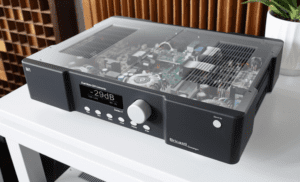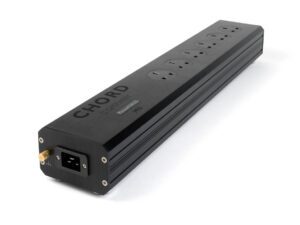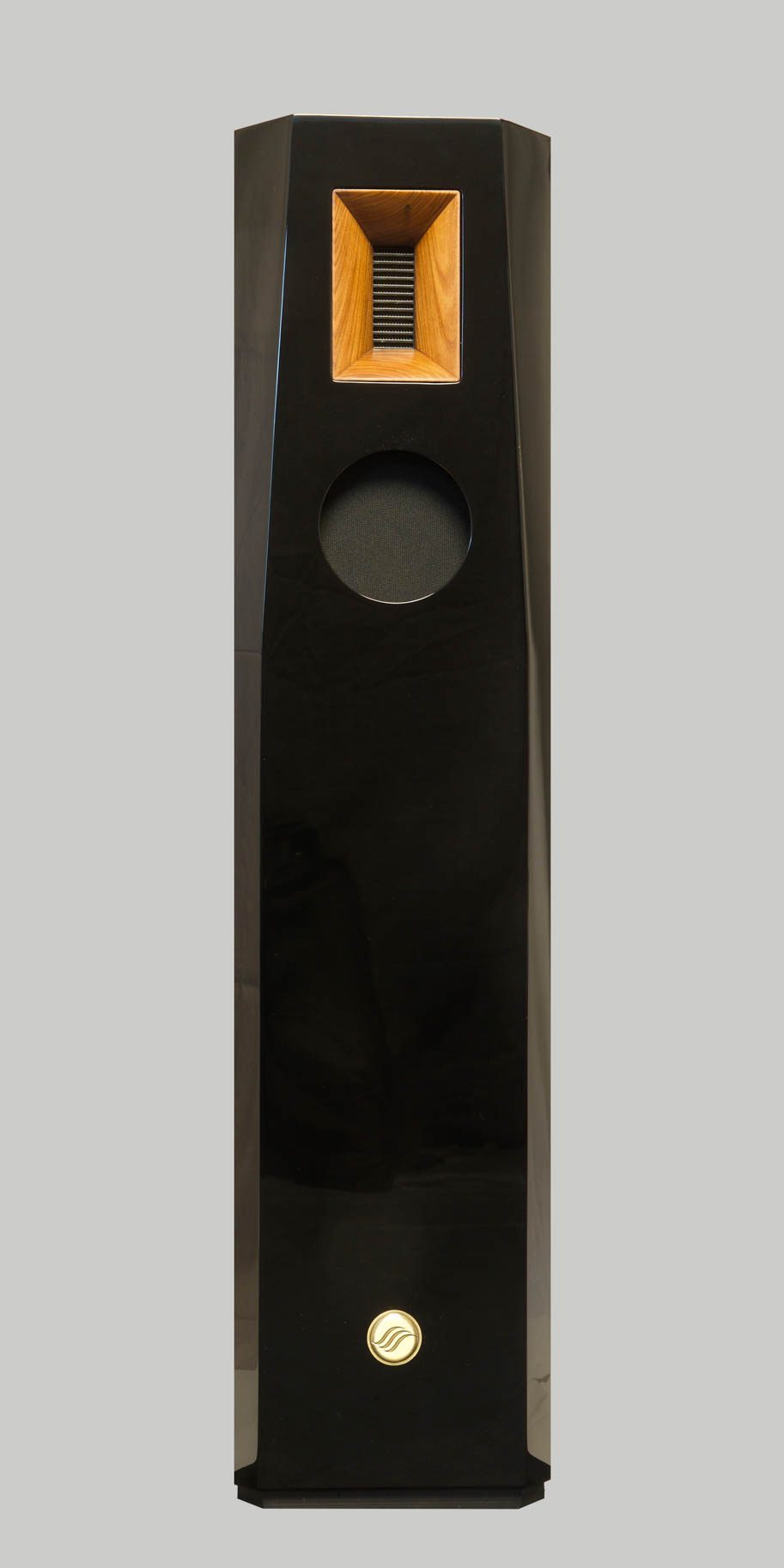
Single-ended triode, single-digit output, so called ‘flea-powered’ valve amplifiers; they are wonderful things but they won’t drive your average speaker, many of which aren’t sensitive enough or have impedance dips in the bass that require more current than any SET can muster. So there is a market for speakers that will work with such delicate devices, and SoundSpace Systems have offerings to tempt anyone who wants to hear what Harvey ‘Gizmo’ Rosenberg called ‘Musical Ecstasy’. Gizmo was attempting to find this elusive state with OTL or output transformerless valve amps, which also need easy loudspeaker loads to make an impression.
The SoundSpace Robin is not your average loudspeaker in any respect. For a start it has sensitivity of 96dB, which makes it suitable for all but the measliest of amplifiers. In fact, it’s unlikely that there’s a decent quality amplifier around that couldn’t drive it. Especially when you consider that the impedance never drops below 6.4 Ohms. This is partly because the low frequencies are actively driven; the two bass drivers in the sides of each cabinet are powered by DSP controlled Class D amplifiers from respected Danish brand Pascal, and are specced to deliver up to 500 Watts. I’m told that SoundSpace Systems reins this in with the aim of maximising quality rather than power. The bass drivers are arranged push-push style on either side of the cabinet and are 10-inch units with carbon fibre cones and twin coil motor systems. They operate in a sealed enclosure for maximum speed and definition.
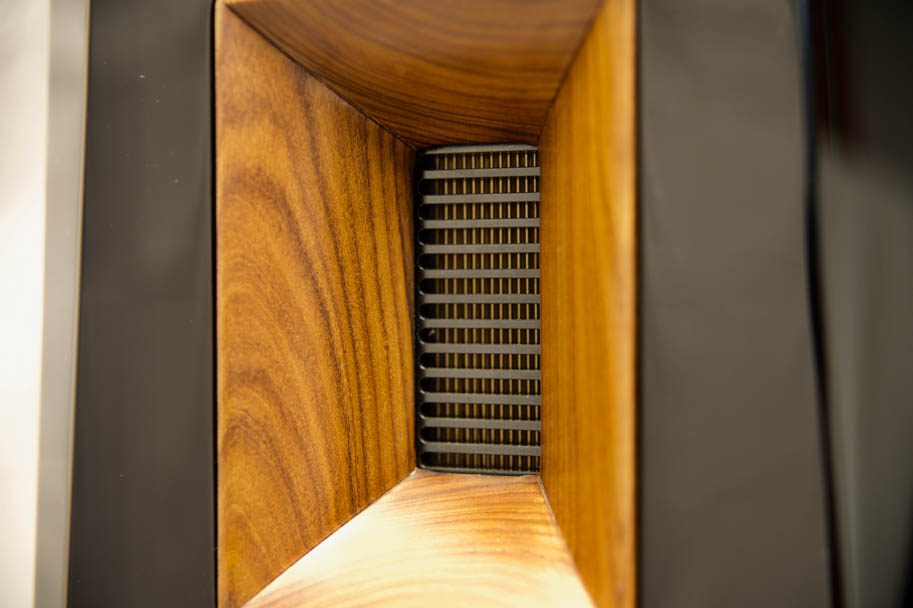
The least radical part of the Robin is the tweeter, which is a Mundorf AMT or air motion transformer type. Such things are not common but popular in the high end for their combination of power handling and low distortion. What is not apparent is the nature of the midrange; this has a form of compression-loading created by an opening that’s smaller than the Supravox 165mm driver behind it. This is normally something seen with horn tweeters where efficiency is increased by placing a chamber in front of the driver dome with a small opening. I’ve never seen it done with a cone like this but then again you can’t see what’s going on. Neither is it clear that the mid operates as a dipole, but there is a grilled area on the back of the box that means sound emanates in both directions making placement rather more critical than with conventional boxes.
The Robin is not a small loudspeaker by any standards, yet it’s the smallest in the German company’s range, weighing in at a respectable 42 kilos and standing over a metre high before you add the isolating feet; it can therefore reasonably be called ‘serious’. The mass is partly accounted for by the use of bamboo in its construction, this isn’t apparent anywhere except the plinth, as the main body of the Robin is finished in piano black, which goes some way to minimising its perceived bulk. Bamboo is not often seen outside of support furniture in the hi-fi universe, however, it’s a relatively inexpensive hardwood with strong green credentials, so I suspect that SoundSpace won’t be the last to use it.
Power filtering
The Robins were supplied with a power filter device that isn’t a standard part of the package, but SoundSpace are of the opinion that noisy mains has a negative effect on Class D amps as much as any other part of the system and they are probably right. The filter is sold directly in order to keep pricing sensible (no distributor or retailer margins) and costs €3,100. Somewhat inconveniently this has twin Schuko outlets, fortunately I had some Ansuz A2 power leads with the correct plugs so was able to employ the filter.
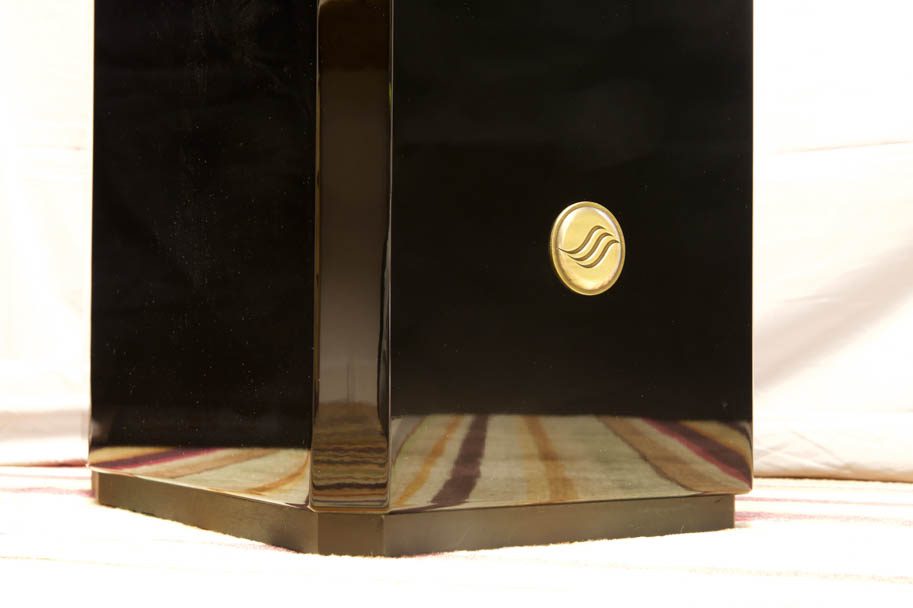
Setting up the Robins required making as much space around them as possible and turning down the bass amplifiers to around 25%. It would be useful if this and the rear tweeter control were stepped so that it’s possible to know that both are in the same position; they are close to the ground and quite small so it’s hard to see whether this is the case. I used the semi-isolating feet that SoundSpace supply, which raise the speakers just over an inch and plugged them into the unsuitably substantial output of a Thrax Ares integrated amplifier. I didn’t have to turn it up very far to be presented with a big, fulsome sound that was replete with low bass. It was at this stage that I realised the bass would have to be reduced to the level mentioned above; in fact, it prompted me to read the manual(!), which suggests pulling the seating away from the wall too as this also reduces bass impact.
My room is usually bass light and I’ve not had to go to such lengths before but it proved very worthwhile. The bass is still robust but it’s balanced by a wonderfully relaxed, tonally rich mid and treble that makes listening a totally effortless experience. Vocals are a clear strongpoint with the Robin and while the dipole arrangement means that imaging isn’t as precise as more conventional designs you do get good depth to the soundstage and plenty of atmosphere on recordings where it’s present. In fact the sound makes it very easy to get caught up in the music especially when Nina Simone is singing ‘The Other Woman’, the pathos that the Robins extract from the recording is heart breaking.
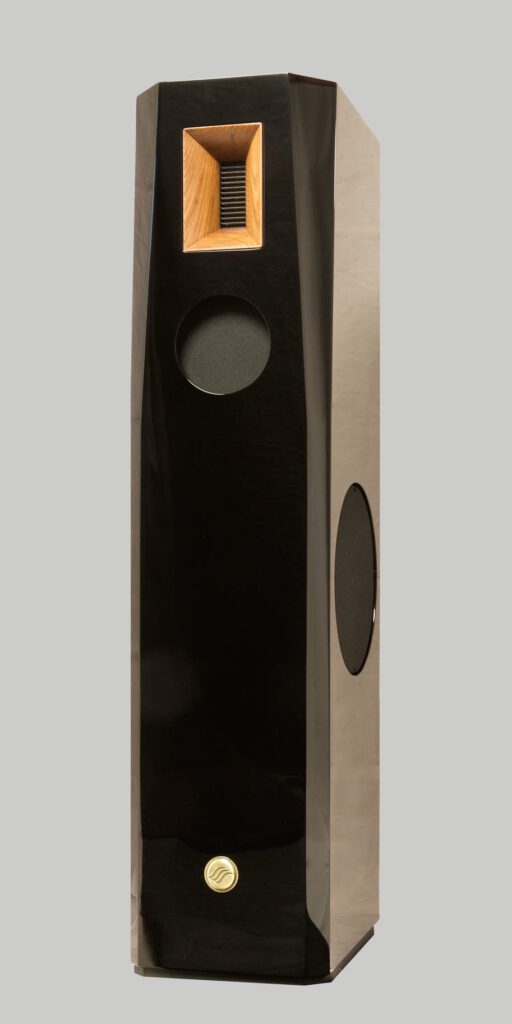
A big benefit of high sensitivity is headroom, there is a sense that these speakers could be played back at seriously high levels without becoming compressed. There’s just no sense of strain especially with a decent recording like Chasing the Dragon’s Locrian Ensemble playing Mendelssohn’s Octet in E Flat Major. I went to the recording of this at the Henry Wood Hall so have some idea of the sort dynamics and scale that this octet produced, the Robins got very close to that sound as far as memory serves, the presentation being highly evocative of the original performance.
Remote EQ
There are situations when bass level seems insufficient, essentially some recordings go harder in this department than others. Moving from an acoustic piece by Anouar Brahem to an electric one by Brokeback leaves one wishing that bass level could be remotely set, but this sort of thing is easier to achieve with EQ in the source or amplification of course. They really make the most of acoustic recordings especially if you toe them in such that the axis of both speakers crosses in front of the listening position. This clearly opens up the soundstage further, it’s because the rear output from the dipole mid/treble is firing outward rather than backward. That said I got some genuinely visceral results with electric productions such as The God In Hackney’s ‘Bardo!’ which has real power and dynamics via the Robins.

Moving over to my reference amplification of Townshend Allegri Reference preamp and Moor Amps Angel 6 power amp resulted in a darker balance that didn’t suit the Robins so well. They seemed to be a better match with the incisive precision of the Thrax, so as I had the Thrax Enjo tube integrated to hand I gave that a try instead. This proved to be a much happier pairing, the tubes further enhancing the ability that these speakers have of making voices seem so real that you can touch them. Laura Marling’s ‘Soothing’ with its fluid yet powerful fretless bass and her delicious vocals allowed a full immersion listening experience that was highly engaging. Dub was likewise very well served, the Robins don’t have Notting Hill Carnival style boombastic bass but when that has been cut into the lacquer they transform themselves into ‘reggae wardrobes’ of considerable power.
Musical compulsion
The SoundSpace Robins seem to be able to adapt to whatever musical style you play through them. I visited the company’s room at Munich High End and heard the larger Pirol models on the end of a pair of push-pull valve amps playing heavy rock. The level that they could sustain without distress produced a sound that was truly alive with energy yet not apparently colored. I suspect that the Robin could so something very similar in a bigger room with the right amplification. With their high sensitivity and benign load the Robins are perfect for tube amplification. The Enjo proved this but I suspect that a single-ended design would double that up. The Robins have a balance that is both warm and musical yet also very revealing of detail, I love the way that they can paint such a deep, rich picture of the music regardless of its style. Expensive yes, musically compelling; doubly so.
Technical specifications
- Type 3-way, four-driver, floorstanding speaker with active bass
- Driver complement One Mundorf AMT tweeter; one 7 inch Supravox midrange driver; two 10 inch carbon fibre bass drivers with 500W active drive
- Crossover frequencies Not specified
- Frequency response 24Hz–35kHz
- Impedance 8 Ohms
- Sensitivity 96dB/W/m
- Dimensions (H×W×D) 1140 × 270 × 430mm
- Weight 42kg/each
- Finishes Black lacquer and rosewood
- Price £45,000/pair
Manufacturer
SoundSpace Systems GmbH
Homepage: https://www.soundspacesystems.com
Robin loudspeaker – https://www.soundspacesystems.com/robin
Who we are – https://www.soundspacesystems.com/about
Tel: +49 (0)30 91 45 99 73
By Jason Kennedy
More articles from this authorRead Next From Review
See all
PrimaLuna EVO 100 phono preamplifier
- Apr 22, 2024

Reiki Audio SuperSwitch Master Pro + Servant Pro
- Mar 27, 2024

Melco Audio N1-S38 music server
- Mar 27, 2024








